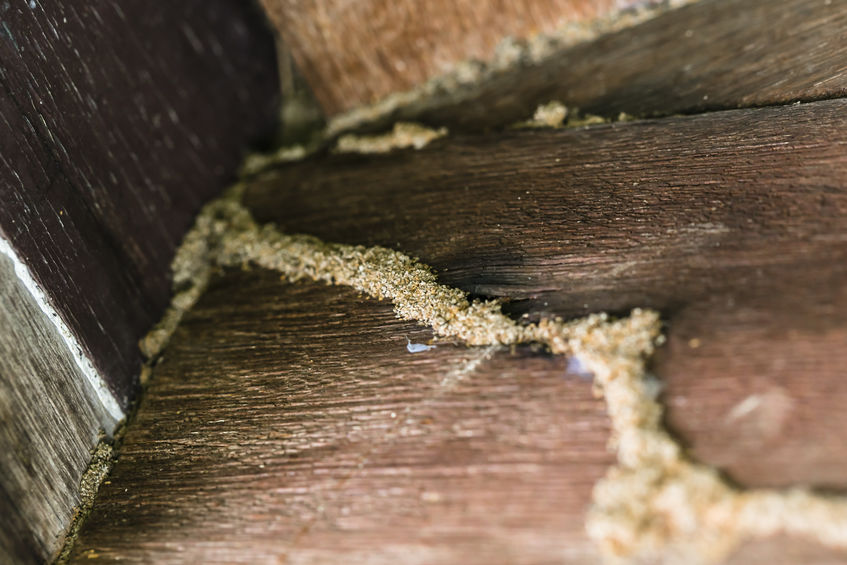Hundreds of millions of years of living below ground have made subterranean termites highly dependent on soil contact. The ground soil contains a significant amount of moisture that subterranean termites need in order to thrive. In fact, subterranean termites will rapidly dessicate and die if they are exposed to the dry outside air. Before timber-framed homes became prevalent, subterranean termites mostly fed on dead plant matter below the ground. While termites will eat any form of decaying plant matter due to their need for cellulose, they mostly feed on woody plant matter, as it disintegrates at a much slower rate than soft plant matter.
In order for subterranean termites to infest above ground wood sources, like logs, mulch, and of course, structural wood in houses, they must construct “shelter tubes” that connect the moist ground soil with above ground wood sources. These shelter tubes, also known as “mud tubes,” protect subterranean termite workers from the deadly effects of the dry outside air. While shelter tubes allow worker termites to return to the ground soil to hydrate as needed, they prefer to infest damp wood sources, as doing so allows them to retain water while feeding on wood. Subterranean termites prefer wood to be decayed and as moist as possible, but they sometimes infest dry and sound structural wood, which has perplexed scientists for decades.
It was long thought that structural wood became saturated with moisture that traveled through shelter tubes from the moist ground soil, making dry structural wood fit for subterranean termite consumption. While this theory was eventually disproven, studies have shown that dry wood becomes progressively damper in response to subterranean termite feeding, indicating that the ground-dwelling insects must be transferring water to above ground wood sources somehow. A recent study revealed that subterranean termites possess a pair of large salivary glands called “water sacs” that serve to increase the moisture content of the wood that they feed on. Subterranean termites prefer wood to have at least a 20 percent moisture content for feeding purposes, and one experiment showed that their salivary glands increased the moisture content of wood samples from 5.1 to 45.2 percent. In other words, no home is safe from subterranean termites.
Have you ever found mud tubes on, or within your home?

